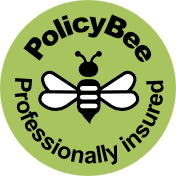
Protein makes up approximately 15% of total body mass of horse. After water, it is the most abundant substance in your horse’s body. When a horse consumes protein, it’s broken down into individual amino acids and absorbed into the bloodstream. These amino acids can then be used to build different protein chains for the body, forming enzymes, cell structures, muscle protein, connective tissue for hooves, hair and more. Meeting crude protein requirements is only part of ensuring your horse has adequate protein. He also needs adequate amino acids. Amino acids are the building blocks of protein. There are 21 primary amino acids, which are broken down into two main categories: non-essential (dispensable) and essential (indispensable). Non-essential amino acids can be manufactured by the horse. Essentials need to be provided through the diet.
Your horse will pull the most important protein chains – the ones he needs for survival – from his own amino acid profile. Areas such as topline and hooves come afterwards. If there are not enough amino acids left over, he cannot form these protein chains. The missing ones are called “limiting amino acids” because the amount a horse has limits the amount of protein that can be made. The most limiting amino acids for your horse are lysine, methionine and threonine. Feeding a variety of protein sources is key to ensuring your horse has an adequate supply of amino acids. Each protein source has different amino acids that your horse will break down and re-use. Examples of various protein sources include grass, hay, legumes, grain, flax, split peas and chia seeds. Adding protein to a diet can also add calories.
Your horse will pull the most important protein chains – the ones he needs for survival – from his own amino acid profile. Areas such as topline and hooves come afterwards. If there are not enough amino acids left over, he cannot form these protein chains. The missing ones are called “limiting amino acids” because the amount a horse has limits the amount of protein that can be made. The most limiting amino acids for your horse are lysine, methionine and threonine. Feeding a variety of protein sources is key to ensuring your horse has an adequate supply of amino acids. Each protein source has different amino acids that your horse will break down and re-use. Examples of various protein sources include grass, hay, legumes, grain, flax, split peas and chia seeds. Adding protein to a diet can also add calories.
2 product(s) found for "ProteinSolution"
Show results as a:
Grid
List
items 0
Price £0.00
Checkout
 AED
AED AFN
AFN ALL
ALL AMD
AMD ANG
ANG AOA
AOA ARS
ARS AUD
AUD AWG
AWG AZN
AZN BAM
BAM BBD
BBD BDT
BDT BGN
BGN BHD
BHD BIF
BIF BMD
BMD BND
BND BOB
BOB BRL
BRL BSD
BSD BTN
BTN BWP
BWP BYN
BYN BZD
BZD CAD
CAD CDF
CDF CHF
CHF CLF
CLF CLP
CLP CNH
CNH CNY
CNY COP
COP CRC
CRC CUC
CUC CUP
CUP CVE
CVE CZK
CZK DJF
DJF DKK
DKK DOP
DOP DZD
DZD EGP
EGP ERN
ERN ETB
ETB EUR
EUR FJD
FJD FKP
FKP GEL
GEL GGP
GGP GHS
GHS GIP
GIP GMD
GMD GNF
GNF GTQ
GTQ GYD
GYD HKD
HKD HNL
HNL HRK
HRK HTG
HTG HUF
HUF IDR
IDR ILS
ILS IMP
IMP INR
INR IQD
IQD IRR
IRR ISK
ISK JEP
JEP JMD
JMD JOD
JOD JPY
JPY KES
KES KGS
KGS KHR
KHR KMF
KMF KPW
KPW KRW
KRW KWD
KWD KYD
KYD KZT
KZT LAK
LAK LBP
LBP LKR
LKR LRD
LRD LSL
LSL LYD
LYD MAD
MAD MDL
MDL MGA
MGA MKD
MKD MMK
MMK MNT
MNT MOP
MOP MRU
MRU MUR
MUR MVR
MVR MWK
MWK MXN
MXN MYR
MYR MZN
MZN NAD
NAD NGN
NGN NIO
NIO NOK
NOK NPR
NPR NZD
NZD OMR
OMR PAB
PAB PEN
PEN PGK
PGK PHP
PHP PKR
PKR PLN
PLN PYG
PYG QAR
QAR RON
RON RSD
RSD RUB
RUB RWF
RWF SAR
SAR SBD
SBD SCR
SCR SDG
SDG SEK
SEK SGD
SGD SHP
SHP SLE
SLE SLL
SLL SOS
SOS SRD
SRD SSP
SSP STD
STD STN
STN SVC
SVC SYP
SYP SZL
SZL THB
THB TJS
TJS TMT
TMT TND
TND TOP
TOP TRY
TRY TTD
TTD TWD
TWD TZS
TZS UAH
UAH UGX
UGX USD
USD UYU
UYU UZS
UZS VES
VES VND
VND VUV
VUV WST
WST XAF
XAF XCD
XCD XCG
XCG XOF
XOF XPF
XPF YER
YER ZAR
ZAR ZMW
ZMW ZWG
ZWG ZWL
ZWL English
English





























































